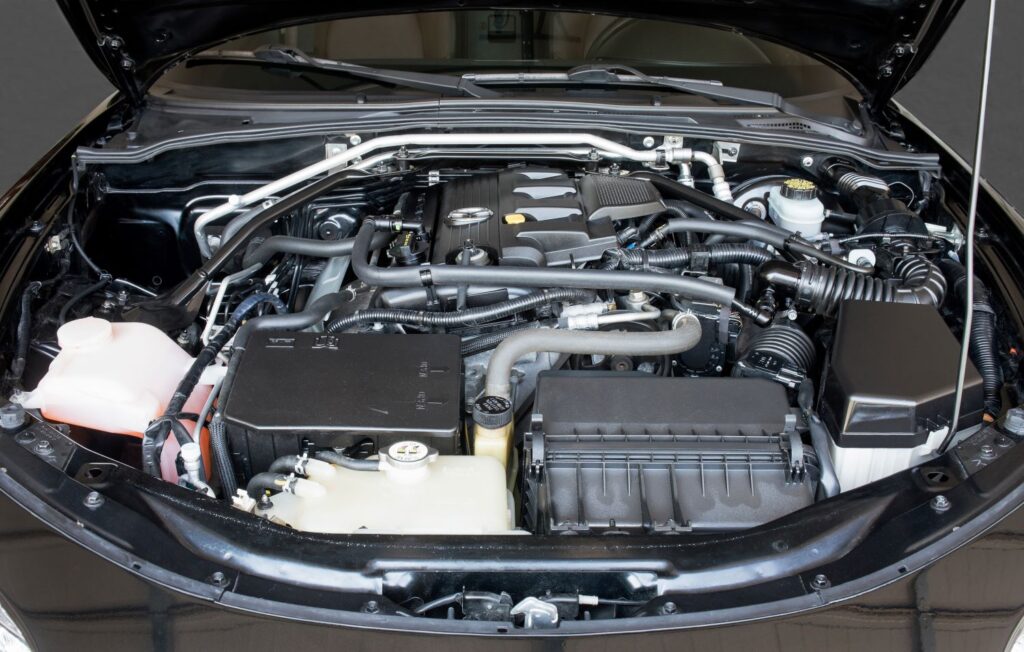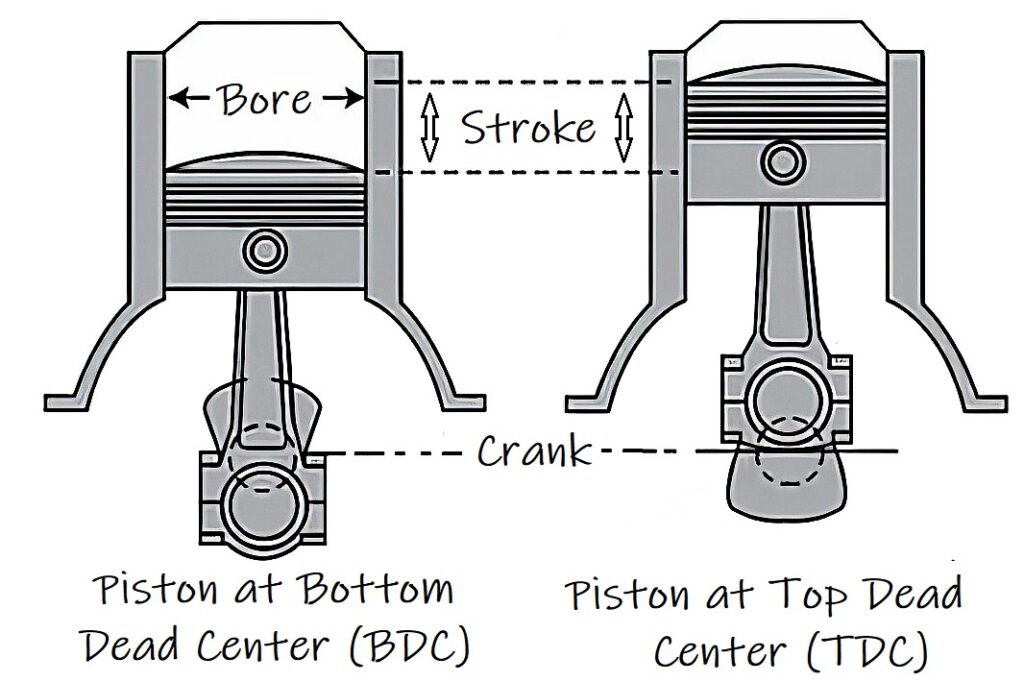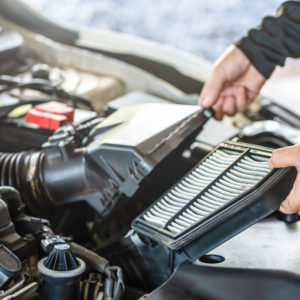Have you ever wondered what car aficionados and manufacturers mean when they brag about engines measuring various amounts of cc, cubic inches, or liters? They’re talking about engine displacement, one of the measurements held in high regard by many drivers.
Engine displacement comes up a lot. But is it really critical? What is engine displacement?
What Is Engine Displacement?
Engine displacement is the total volume of the cylinders swept by the pistons during a stroke. In simpler terms, it’s the maximum amount of air the engine can displace. This figure doesn’t include the space taken up by the combustion chambers, where air and fuel mix together before they burn to generate energy.

On a 3.0L engine, for example, if you make two full turns of the crankshaft and capture all the air that moves through the engine, you’ll capture 3.0 liters of air. That assumes 100% volumetric efficiency.
But when the engine is running, unless it’s turbocharged or supercharged (forced induction), you won’t get a full 100% volumetric efficiency because air has weight and has to travel through channels to get to the cylinders. There’s also only so much time for the air to enter and make its way past the intake valves into the cylinders.
An engine is basically a big breathing machine. Atmospheric pressure is what causes air to enter the engine as the pistons and valves work together to make engines “breathe.”
An engine is basically a big breathing machine. Atmospheric pressure is what causes air to enter the engine as the pistons and valves work together to make engines “breathe.”
– Richard McCuistian, ASE Certified Master Automobile Technician
Units of Measurement
The units of measurement used for engine displacement are cubic centimeters (cc), cubic inches, or liters.
Before the 1970s, cubic inches served as the unit of measurement for domestic engines. One example is the Ford 302 small-block engine series that powered various models like the early Ford Mustangs.
The 302 in the engine’s name stands for its original displacement of 302 cubic inches. A 5.0L engine is a 302 cubic inch engine. On average, there are just over 60 cubic inches per liter. Five liters multiplied by 60 comes very near 300, thus, the 302.
Manufacturers began the transition to liters in the seventies. This practice continues today, although some still use cubic inches for various reasons.
A liter is 1,000 cubic centimeters. Motorcycle engines are typically measured in CCs (cubic centimeters). A 1,200 CC motorcycle engine is a 1.2 liter engine.
What Does Engine Displacement Mean?
The primary role of engine displacement is to serve as a measurement. When people want to describe how big or small an engine is, they usually cite its displacement.
Furthermore, engine displacement provides an easy way to compare the sizes of two different engines. A good rule of thumb is that the higher the displacement, the bigger the engine and the more space it takes up in the vehicle’s front end.
How Is Engine Displacement Measured?
Calculating engine displacement requires you to know three values: The area of the cylinder bore, the stroke length, and the number of cylinders in the engine.

Engine Cylinder Bore Area
The cylinder bore is the diameter of the engine cylinder. Specifically, it’s the diameter of the inner cylinder, the space that the piston passes through.
Multiply the bore’s diameter by π, the ratio of a circle’s circumference to its diameter, to get the area of the engine cylinder bore.
If you only have the radius of the cylinder bore, multiply the value by two to get the diameter. Then you can multiply that by π.
Stroke Length
Next is the stroke length, how far the piston moves inside the cylinder during a single stroke. You can find the stroke length by looking up the manufacturer’s information on your vehicle’s engine.
Engine Cylinder Number
Last but not least, you’ll need to find out the number of cylinders in your car’s engines. This should prove easy to find in the owner’s manual.
Formula For Calculating Engine Displacement
Once you have the area of the cylinder bore, the stroke length, and the number of engine cylinders, plug them into the following formula to calculate engine displacement:
[engine cylinder bore area] x [stroke length] x [number of cylinders]
If you’re in a hurry, you can usually find an engine displacement calculator online. Plug the values into the calculator and click the button to produce the results.
Liters, Cubic Inches, and CC
The liter is the largest of the three units of measurement used to quantify engine displacement. One liter equals 61.02 cubic inches or 1,000 cc. Meanwhile, a cubic inch is equivalent to 16.387 cc.
Why Does Engine Displacement Matter?
While people like to hype engine displacement, it mainly serves as a way to measure and compare engine sizes. The engine’s dimensions do not directly correlate to its horsepower output. While bigger engines do produce more power, the increase isn’t commensurate with the size increase.
Other factors increase power more efficiently than installing a larger engine or increasing the cylinder bore. Alternatives like using performance parts and switching to premium fuel cost much less and require less effort to implement than boosting displacement.
Still, engine displacement does play a part in the engine’s operation. Here are the ways that displacement matters:

Engine Performance
The engine’s displacement helps set the baseline for how much horsepower and torque it can put out when running at full speed.
Think of an engine as an air pump. Both devices move quantities of air to do something. The bigger the device, the greater the volume of air it can pump for its needs.
Higher displacement means larger engines that can handle more air. They can fit larger volumes of air in their cylinders’ combustion chambers for mixing with fuel to generate power.
Fuel Consumption
In addition to setting the engine’s maximum power and torque, engine displacement indirectly affects fuel consumption.
As mentioned, engines with higher displacements can handle more air and fuel. Higher capacity lets these engines produce more horsepower and torque than smaller engines. However, they must burn more gasoline or diesel to meet the engine load.
Cost
It’s a no-brainer that there’s a connection between engine displacement and cost. Larger engines don’t only consume more fuel and oil. They also have a higher price tag and maintenance cost in general.
High-displacement engines usually have more parts, such as additional cylinders and their respective pistons. The extra components will require more upkeep and lubrication in the form of engine oil.
Can I Increase Engine Displacement?
Since higher engine displacements show superior engine performance, it might seem logical to boost engine power by increasing displacement.
You can increase engine displacement in two ways. One is to bore out the cylinders. The other is to make the stroke length even longer. Both approaches require you to modify the engine, which can cost a tidy sum.
However, there are more efficient ways to increase engine power. You can improve volumetric efficiency, the engine’s ability to move air and fuel as efficiently as possible. Installing superchargers or turbochargers lets you boost the engine’s output by speeding up the air’s movement.
Another way is to enhance thermal efficiency, the amount of usable power the engine can produce with the amount of fuel in the cylinders. You can do this by increasing compression ratios with improved head gaskets.
Where to Get Engine Parts for Your Ride
Proper maintenance is crucial to ensure engine displacement. That includes everything from timely servicing to replacing faulty or damaged engine parts. For top-quality engine parts that won’t break the bank, look no further than CarParts.com.
Our extensive selection features a wide range of engine and drivetrain parts sourced from the leading brands in the automotive industry. All come with a low price guarantee, so you won’t have to go over budget just to get your ride back on the road.
To start, simply visit our website and utilize our intuitive vehicle selector tool to find compatible parts for your specific ride. Then, use the search filters to view the ones that match your preferred brand, price, and features.
Worried about quality? Rest assured, all of our engine parts undergo rigorous testing to ensure they meet or exceed industry standards. You can be sure you’re getting top-notch parts that are built to last. What’s more, we have warehouses located across the country to ensure fast and efficient shipping.
Check out our engine parts and shop now!
Any information provided on this Website is for informational purposes only and is not intended to replace consultation with a professional mechanic. The accuracy and timeliness of the information may change from the time of publication.
































